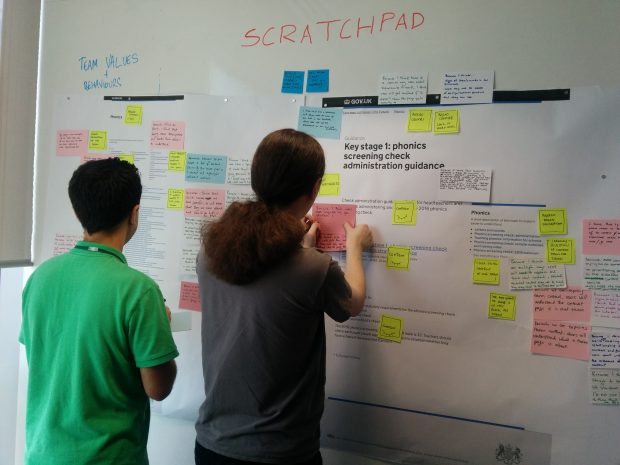It’s official: the new GOV.UK taxonomy is now in beta.
What that means, exactly
‘Congratulations’, you might be thinking. ’But what is it?’
Put simply, a taxonomy is a classification scheme for organising content into meaningful groups. (Oh, and thanks.)
As members of the Finding Things team have written previously, we’ve long understood the need for a GOV.UK taxonomy that’s subject-based and site-wide, and we’ve been working towards achieving this challenging aim for a while.
When finished, the taxonomy will group together all content on the site in a meaningful and intuitive way, using a hierarchical structure. It will consist of many ‘topics’ and ‘subtopics’, to which all content items will be tagged.
We’re not there yet, but we do now have a branch that covers the government’s education offering - and with all the relevant content tagged to it, thanks to the tireless work of publishers within the government’s education organisations.
How it’ll help users
So why does government need a site-wide taxonomy?
Because government has a lot of content: more than 300,000 individual items, in fact. With so much content it can be very difficult for users to find the thing they’re looking for - or, if they’re searching more broadly around a subject, to find things of real value or relevance.
We also know from user research with professional users like teachers, accountants, lawyers and tax specialists that there are people who need to see everything about a topic so they can do their job properly. Without a subject-based taxonomy in place, these users might only get partial information and not the full picture.
This new taxonomy will act as a framework for a redesigned navigation, with the 2 working in tandem to help users orientate themselves and explore the site more confidently and effectively.
You can see the beta version of the new navigation, which is driven by and displays topics from the new education taxonomy, for yourself right now.
What’s next
In the short-term, as we remain in beta, we have 2 outstanding goals:
- To launch the parenting and childcare branch of the taxonomy, that sits alongside the education one.
- To surface all non-guidance education content within the new navigation.
We expect to achieve both these aims over the next few weeks. We’ll also be paying very close attention to how the new taxonomy fares with users now that it’s live. 1 in 10 visitors to GOV.UK education content will be shown the navigation underpinned by the new taxonomy. We’ll be monitoring the relevant performance data very closely, iterating as appropriate.
Longer-term, our attention turns to other content themes and topics. Work is already underway for developing a branch of the taxonomy for environment content - the education team has shared learnings, processes and even staff with this fledgling team, to ensure we continue to do what’s worked well, and review and revise what was less successful. Soon, this same process will begin for transport content too.
Our overarching objective, of course, is to develop and implement branches of the taxonomy to cover all GOV.UK content. Just as it has been with education, collaboration and communication between departments, agencies, publishers and other personnel will be vital to our collective success in achieving this aim.
For now though, we hope you’ll take a look at the beta and leave your thoughts on this, or anything else covered in this blog, below.

 The GOV.UK app went live in public beta in July 2025. Find out what’s been happening, and what’s coming next,
The GOV.UK app went live in public beta in July 2025. Find out what’s been happening, and what’s coming next,
2 comments
Comment by Susan Bayliss posted on
GOV.UK's predecessors UKOnline and DirectGov arranged their content into a multi-level hierarchy, and it's great to see GOV.UK finally endorsing this approach.
Comment by Graeme Claridge posted on
Hi Susan,
Thanks for your comment.
We know that at present navigating GOV.UK is difficult for users. A vast amount of content was moved across to the site (from DirectGov and more than 300 other sites) in transition. This was done gradually, which, though preferable in many ways, meant it was impossible to fully grasp the scale and shape of this content. We're now able to better organise the content, now that it’s all in one place.
We’ll be updating this blog with further developments relating to the taxonomy and navigation designs, so do check back if you’re interested.
Regards,
Graeme